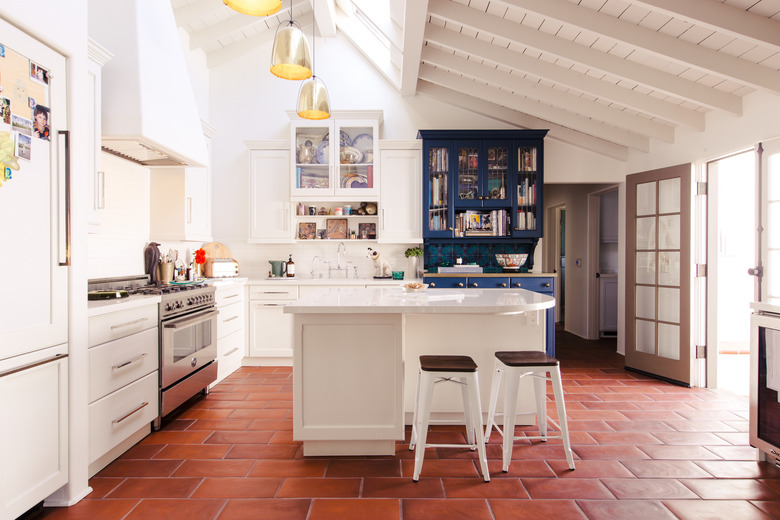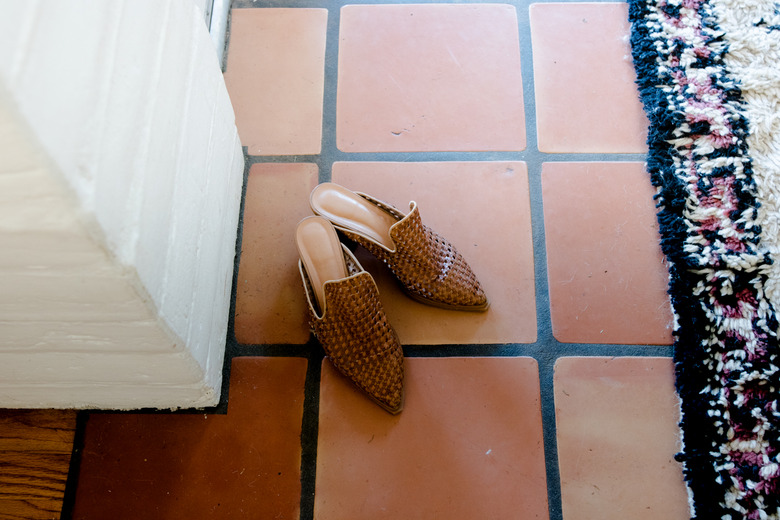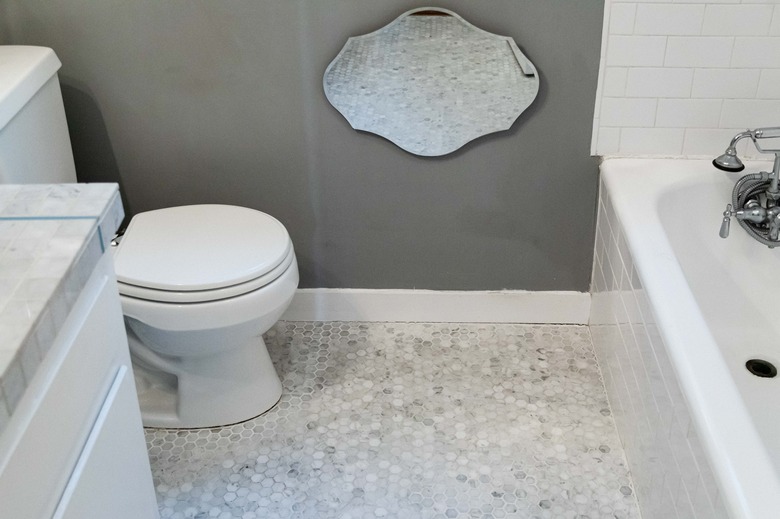How To Clean Tile Floors
Having tile floors in rooms like your kitchen, bathroom or even living areas can make life easy for a number of reasons. Widely celebrated for being water resistant, eco-friendly and durable, tile flooring is also ideal because it's generally easy to clean, especially if regular upkeep is part of your home-care routine.
Some of the most common types of tile found in the home include ceramic, porcelain and natural stone varieties like slate, marble and granite. Cleaning certain types of tile will require specific cleansers and techniques, but all can be done at a low cost and in little time.
Choosing the Right Cleaner
Choosing the Right Cleaner
There are a number of floor cleaners made for cleaning tile that you can purchase at most hardware stores and even some grocery stores. The main thing to keep in mind when shopping for a tile floor cleaner is the material of which your tile is made because different tiles have specific needs:
- Natural stone. A gentle detergent or stone-cleaning soap is needed to wash stone tile flooring. When cleaning natural stone like granite or marble, it is very important to stay away from harsh chemicals like ammonia and bleach as well as acid-based cleaners that contain ingredients like citric acid or vinegar.
- Porcelain. Nonabrasive, all-purpose cleaners are generally safe to use on porcelain.
- Ceramic tile. Ceramic tile is very easy to clean and isn't usually damaged by specific products. A mild detergent like dish soap mixed with water will do the trick, as will many commercial tile surface sprays.
Most tile floors contain grout in between the tiles, which can become dirty, stained or riddled with mold over time. If you wish to pay extra attention to your grout lines to get them sparkling white again, use a cleaning product and a stiff nylon brush to gently scrub the grout and lift any stains or residue. Popular grout cleaners include Grout-Eez and Soft Scrub.
How to Clean Tile Floors
1. Prep Your Floors
In order to get the deepest clean for your tile floors and have them looking their best, you'll first need to remove any dirt and debris from the surface, says Old House Journal. This can be done by vacuuming your floor or using a soft-bristle broom.
2. Wet Floors
Once your floors are cleaned off, wet the surface with a damp mop that wrings out water easily, like a chamois style, which won't leave dirty water resting in your grout lines.
3. Apply Cleaner
Depending on your cleaning product of choice, either use a mop to wash the solution over your tiles or spray the cleaner directly onto the tile surface and let it sit for about five minutes. Then, use your mop to wipe the solution onto the floor, taking extra care to tackle stubborn stains with a soft-bristled scrubbing brush if necessary.
4. Clean the Grout (As Needed)
Apply your grout cleaner to a 2-foot area of the tile, taking care to coat the surface well with the product. Then, use your brush to scrub the solution into your grout joints using a bit of force. Repeat this step as often as needed and use a towel to dry everything once you're done.
5. Rinse Everything Clean
Wring your mop and run some clean water over the surface of your tile floors, removing any cleaning products and dirt.
6. Wipe Everything Clean
This step is optional, as any tile surface will air dry on its own with enough time. That said, you should allow your flooring to dry completely before walking on it after it is cleaned. If you do wish to dry your floors after cleaning them, a microfiber towel or dry mop will ensure no damage no matter the surface type.
DIY Cleaning Solutions
DIY Cleaning Solutions
If store-bought cleansers aren't your preferred cleaning method, you can still have clean tile floors by creating a gentle but effective tile floor cleaner using just a few household ingredients. One effective DIY tile cleaner for ceramic and porcelain tiles can be made by mixing 1/4 cup of white vinegar with about 2 gallons of warm water.
Alternatively, isopropyl alcohol is used by many people as a disinfectant cleaner, which makes it a great option for cleaning tiles in rooms that can get humid or wet, like bathrooms or kitchens, and is safe for use on natural stone tile surfaces.
To clean the grout in between your tiles with everyday ingredients, start by creating a paste using baking soda and water and let it sit on the grout surface for several minutes. Then, use a small nylon cleaning brush to scrub the mixture into the grout lines. Next, add a small amount of hydrogen peroxide to the paste and allow it to bubble up and sit for an additional few minutes. Give everything one final scrub before rinsing the area clean with warm water.


